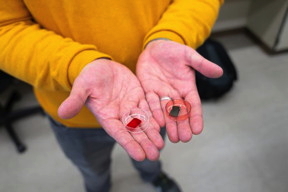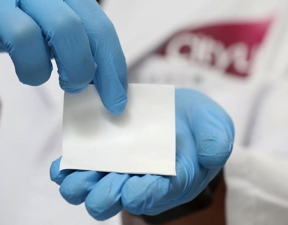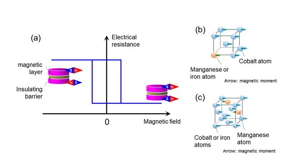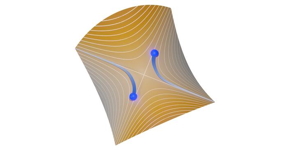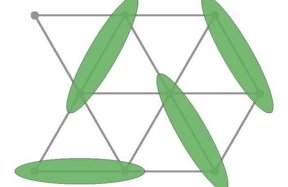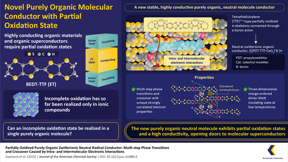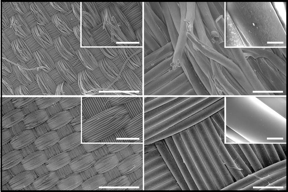Home > Press > Advances in priming B cell immunity against HIV pave the way to future HIV vaccines, shows quartet of new studies
 |
Abstract:
Scientists have made several advances in the design of a class of HIV vaccines that could offer broad protection against the virus, according to four new research papers published this week in Science, Science Translational Medicine, and Science Immunology. “The studies […] exemplify progress in the rational design of [germline-targeting] HIV-1 vaccines, and what is being learned will guide [germline-targeting] programs for inducing [broadly neutralizing antibodies] against other human pathogens,” Rogier Sanders and John Moore write in a related Perspective on the new articles.
Advances in priming B cell immunity against HIV pave the way to future HIV vaccines, shows quartet of new studies
Washington, DC | Posted on May 17th, 2024
As the HIV epidemic enters its fifth decade, scientists have poured time and resources into developing vaccine candidates for the virus. However, health authorities still lack a working, approved vaccine that induces broadly neutralizing antibodies, which can neutralize the most common circulating strains of HIV. One solution involves a process called germline targeting, where scientists use a series of proteins targeted by the immune system (immunogens) to shepherd and “prime” young B cells as they mature in sites called germinal centers, with the goal of coaxing the cells to produce broadly neutralizing antibodies against HIV. In the first paper in Science, Jon Steichen and colleagues tested the protective effects of a new germline-targeting strategy based on the N332-GT5 trimer, a component of the HIV viral envelope. Leveraging cryo-electron microscopy, the team showed that their approach successfully primed and boosted quantities of B cells that secret precursors to BG18 – an anti-HIV broadly neutralizing antibody – in a group of eight rhesus macaques. Taking a different delivery approach in the second Science study, Zhenfei Xie and colleagues demonstrated they could prime B cells with N332-GT5 via mRNA, which they delivered via lipid nanoparticles. When given to humanized mice, the mRNA delivered both the primary immunogen (N332-GT5) and two additional immunogens that further primed the target B cells. Together, these immunogens kickstarted the activation and expansion of B cells that secreted precursors to BG18, with Xie et al. hypothesizing that their strategy could reduce undesirable off-target binding. Meanwhile, in a study in Science Translational Medicine, Christopher Cottrell and colleagues designed a new nanoparticle immunogen as a boost to germline-targeting HIV vaccines. They first primed mice with an immunogen named eOD-Gt8 60mer, which was previously found to induce precursors to anti-HIV, VRC01-class broadly neutralizing antibodies in a phase 1 trial. After priming, Cottrell et al. then vaccinated mice with another immunogen named core-g28v2 60mer (in both protein and mRNA form) as a “first boost.” They found that this prime-boost approach elicited VRC01-class antibodies that were precursors to broadly neutralizing antibodies and neutralized HIV-like pseudoviruses in culture. Finally, in a study in Science Immunology, Xuesong Wang and colleagues showed that they could deliver eOD-Gt8 60mer as an initial priming immunogen via mRNA encapsulated in lipid nanoparticles. The researchers transferred several different humanized B cell lines into mice to mimic the competition between B cells that occurs during immunization. Their priming strategy coaxed B cells to diversify, participate in germinal centers, and acquire mutations and characteristics needed to secrete VRC01-class antibodies. In their related Perspective, Sanders and Moore add that the results provide a strong proof-of-concept for promising germline-targeting approaches, noting that the N332-GT5 trimer is now in a phase 1 trial.
####
For more information, please click here
Contacts:
Media Contact
Science Press Package Team
American Association for the Advancement of Science/AAAS
Expert Contacts
Andrew B. Ward
The Scripps Research Institute
Devin Sok
The Scripps Research Institute
Shane Crotty
The Scripps Research Institute/La Jolla Institute for Immunology/University of California, San Diego
Cell: +1-858-353-2139
William R. Schief
The Scripps Research Institute/Ragon Institute of MGH, MIT, and Harvard/Moderna, Inc.
Facundo D. Batista
The Ragon Institute of Mass General, MIT, and Harvard/Department of Biology, Massachusetts Institute of Technology
Perspective author: Rogier W. Sanders
Amsterdam UMC, University of Amsterdam/Amsterdam Institute for Immunology and Infectious Diseases/Weill Cornell Medicine
Perspective author: John P. Moore
Weill Cornell Medicine
Copyright © American Association for the Advancement of Science/AAAS
If you have a comment, please Contact us.
Issuers of news releases, not 7th Wave, Inc. or Nanotechnology Now, are solely responsible for the accuracy of the content.
| Related Links |
| Related News Press |
News and information
![]()
Gene therapy relieves back pain, repairs damaged disc in mice: Study suggests nanocarriers loaded with DNA could replace opioids May 17th, 2024
![]()
Oscillating paramagnetic Meissner effect and Berezinskii-Kosterlitz-Thouless transition in cuprate superconductor May 17th, 2024
Possible Futures
![]()
Aston University researcher receives £1 million grant to revolutionize miniature optical devices May 17th, 2024
![]()
Gene therapy relieves back pain, repairs damaged disc in mice: Study suggests nanocarriers loaded with DNA could replace opioids May 17th, 2024
![]()
Oscillating paramagnetic Meissner effect and Berezinskii-Kosterlitz-Thouless transition in cuprate superconductor May 17th, 2024
Nanomedicine
![]()
Diamond glitter: A play of colors with artificial DNA crystals May 17th, 2024
![]()
New micromaterial releases nanoparticles that selectively destroy cancer cells April 5th, 2024
![]()
Good as gold – improving infectious disease testing with gold nanoparticles April 5th, 2024
Discoveries
![]()
Diamond glitter: A play of colors with artificial DNA crystals May 17th, 2024
![]()
Finding quantum order in chaos May 17th, 2024
![]()
What is “time” for quantum particles? Publication by TU Darmstadt researchers in renowned journal “Science Advances” May 17th, 2024
Announcements
![]()
Diamond glitter: A play of colors with artificial DNA crystals May 17th, 2024
![]()
Finding quantum order in chaos May 17th, 2024
![]()
Oscillating paramagnetic Meissner effect and Berezinskii-Kosterlitz-Thouless transition in cuprate superconductor May 17th, 2024
Interviews/Book Reviews/Essays/Reports/Podcasts/Journals/White papers/Posters
![]()
Gene therapy relieves back pain, repairs damaged disc in mice: Study suggests nanocarriers loaded with DNA could replace opioids May 17th, 2024
![]()
Oscillating paramagnetic Meissner effect and Berezinskii-Kosterlitz-Thouless transition in cuprate superconductor May 17th, 2024
Nanobiotechnology
![]()
Diamond glitter: A play of colors with artificial DNA crystals May 17th, 2024
![]()
New micromaterial releases nanoparticles that selectively destroy cancer cells April 5th, 2024
![]()
Good as gold – improving infectious disease testing with gold nanoparticles April 5th, 2024
- SEO Powered Content & PR Distribution. Get Amplified Today.
- PlatoData.Network Vertical Generative Ai. Empower Yourself. Access Here.
- PlatoAiStream. Web3 Intelligence. Knowledge Amplified. Access Here.
- PlatoESG. Carbon, CleanTech, Energy, Environment, Solar, Waste Management. Access Here.
- PlatoHealth. Biotech and Clinical Trials Intelligence. Access Here.
- Source: http://www.nanotech-now.com/news.cgi?story_id=57484
- :is
- :not
- :where
- ][p
- $UP
- 1
- 10
- 17th
- 4
- 5th
- 7
- 7th
- 8th
- a
- access
- According
- accuracy
- accurate
- acquire
- Activation
- add
- Additional
- advanced
- advancement
- advances
- After
- against
- agile
- AL
- American
- an
- and
- Another
- Antibodies
- antibody
- approach
- approaches
- approved
- April
- ARE
- articles
- artificial
- AS
- Association
- author
- Authorities
- b
- back
- based
- being
- Better
- between
- binding
- biology
- boost
- Boosted
- both
- broad
- broadly
- by
- calculations
- california
- called
- CAN
- Cancer
- candidates
- capsules
- cell
- Cells
- Center
- Centers
- CGI
- characteristics
- Christopher
- circulating
- class
- click
- colleagues
- COM
- comment
- Common
- competition
- component
- conductivity
- content
- cornell
- could
- Culture
- dc
- decade
- del
- deliver
- delivered
- delivery
- demonstrated
- Design
- designed
- destroy
- develop
- developing
- Devices
- different
- Disease
- diversify
- dna
- drug
- during
- E&T
- effect
- effects
- eight
- enabling
- encapsulated
- end
- Enters
- envelope
- Epidemic
- Ether (ETH)
- exemplify
- expansion
- faster
- fifth
- Finally
- First
- flexible
- For
- form
- formulation
- found
- four
- further
- future
- General
- gif
- given
- goal
- Gold
- grant
- greatly
- Group
- Grow
- guide
- Have
- Health
- HIV
- However
- http
- HTTPS
- human
- humanized
- if
- immune
- Immune system
- immunity
- immunogen
- immunology
- improve
- improving
- in
- Inc.
- induces
- infectious
- information
- initial
- Institute
- interactions
- into
- involves
- ITS
- John
- jon
- journal
- jpg
- kickstarted
- Lack
- learned
- leveraging
- light
- lines
- links
- made
- MAKES
- March
- Mass
- massachusetts
- matching
- mature
- May..
- Meanwhile
- medicine
- Methodology
- mice
- microscopic
- Microscopy
- million
- MIT
- more
- most
- mRNA
- Named
- nanotechnology
- needed
- net
- New
- news
- noting
- novel
- now
- of
- offer
- on
- ONE
- optical
- or
- order
- Other
- package
- Pain
- pandemic
- Paper
- papers
- participate
- path
- pave
- performance
- perspective
- phase
- phenomenon
- PHP
- plato
- Plato Data Intelligence
- PlatoData
- Play
- please
- Post
- posted
- poured
- press
- Press Release
- previously
- primary
- Prime
- problems
- process
- produce
- Programs
- Progress
- promising
- propose
- protection
- Protective
- Protein
- Proteins
- provide
- Publication
- published
- quantities
- Quantum
- quantum particles
- R
- Rational
- realistic
- receives
- reduce
- related
- release
- Releases
- relieves
- Renowned
- repairs
- replace
- research
- researcher
- researchers
- Resources
- responsible
- Results
- return
- Revealed
- revolutionize
- robots
- San
- sanders
- Save
- Science
- scientists
- Search
- Second
- Secret
- Series
- several
- Share
- showed
- Shows
- Sites
- Soft
- solely
- solution
- SOLVE
- start
- Still
- Strains
- Strategy
- strong
- studies
- Study
- submit
- Successfully
- such
- Suggests
- system
- taking
- Target
- targeted
- targeting
- team
- tech
- technique
- tested
- Testing
- that
- The
- their
- then
- therapy
- These
- they
- this
- this week
- time
- to
- together
- transferred
- transition
- trial
- two
- university
- us
- use
- uses
- using
- Vaccine
- vaccine candidates
- vaccines
- via
- viral
- virginia
- virus
- W
- wang
- was
- washington
- Wave
- Way..
- week
- were
- What
- What is
- when
- which
- will
- with
- working
- write
- Yahoo
- you
- young
- zephyrnet










